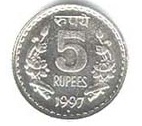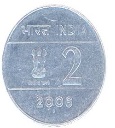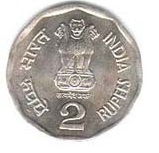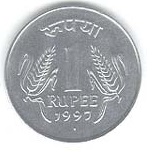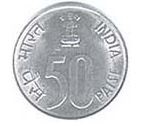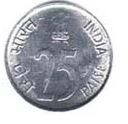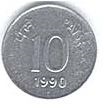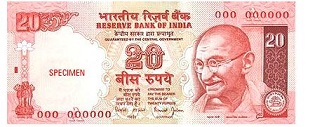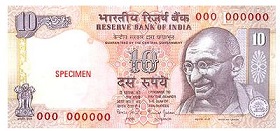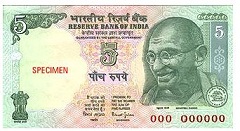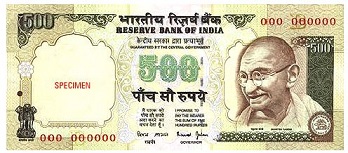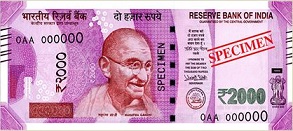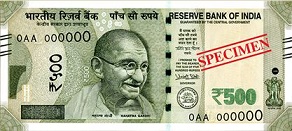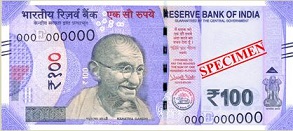 Introduction
Introduction
Currency - RBI Role:
- RBI plays an important role in Indian Currency System.
- Along with the Government of India, it is responsible for the design, production and overall management of the nation's currency, with the goal of ensuring an adequate supply of clean and genuine notes.
- The Government of India is the issuing authority of coins and supplies coins to the Reserve Bank on demand.
- RBI puts the coins into circulation on behalf of the Central Government.
- Minimum reserve system
 Concept
Concept
Indian Currency System - Printing Presses:
- Four printing presses print and supply banknotes.
- These are at Dewas in Madhya Pradesh, Nasik in Maharashtra, Mysore in Karnataka, and Salboni in West Bengal.
- The presses in Madhya Pradesh and Maharashtra are owned by the Security Printing and Minting Corporation of India (SPMCIL), a wholly owned company of the Government of India.
- The presses in Karnataka and West Bengal are owned by the Bharatiya Reserve Bank Note Mudran Private Limited (BRBNMPL), a wholly owned subsidiary of the RBI.
- Coins are minted by the Government of India.
- RBI is the agent of the Government for distribution, issue, and handling of coins.
- Mumbai in Maharashtra, Noida in Uttar Pradesh, Kolkata, and Hyderabad.
 Currency
Currency
Indian Currency System - Concept - RBI’s Clean Note Policy:
It is an Education campaign on preferred way to handle notes:
- no stapling, writing, excessive folding
- use of currency verification and processing systems and sorting machines
- at all branches of commercial banks
- The Government of India has the sole right to mint coins.
- The responsibility for coinage vests with the Government of India in terms of the Coinage Act, 1906 as amended from time to time.
- The designing and minting of coins in various denominations is also the responsibility of the Government of India.
- Coins are minted at the four India Government Mints at Mumbai, Ali pore(Kolkata), Saifabad(Hyderabad), Cherlapally (Hyderabad) and NOIDA (UP).
- The coins are issued for circulation only through the Reserve Bank in terms of the RBI Act.
- Coins in India are presently being issued in denominations of 50 paise, one rupee, two rupees, five rupees and ten rupees.
- Coins up to 50 paise are called small coins and coins of Rupee one and above are called Rupee Coins.
- Coins in the denomination of 1 paise, 2 paise, 3 paise, 5 paise, 10 paise, 20 paise, and 25 paise have been withdrawn from circulation with effect from June 30, 2011, and are, therefore, no more legal tender.
- Coins can be issued up to the denomination of Rs.1000 as per the Coinage Act, 1906.
Indian Currency System - Currency - Contemporary Bank Notes:
Hundred Rupees Note:
Fifty Rupees Note:
Twenty Rupees Note:
Ten Rupees Note:
Five Rupees Note:
To Know Contemporary Bank Notes Security Features and Language Panel: Source Click Here
- Banknotes in India are currently being issued in the denomination of Rs 10, Rs 20, Rs 50, Rs 100, Rs 200, Rs 500, Rs 1000 and Rs 2000.
- These notes are called banknotes as they are issued by the Reserve Bank of India (Reserve Bank).
- The printing of notes in the denominations of Rs 2 and Rs5 has been discontinued.
- Rs 1 was also not being printed since long due to coinization.
Indian Currency System - Currency - New Series Bank Notes:
Two Thousand Rupees Note:
Five Hundred Rupees Note:
Two Hundred Rupees Note:
Hundred Rupees Note:
To Know the key points of New 1000 Rupees Note : Source
Fifty Rupees Note:
Ten Rupees Note:
To Know the Complete details of the New Series bank notes: Source Click Here
Indian Currency System - Currency - Key Points:
Bank notes are legal tender at any place in India for payment without limit. According to the Indian Coinage Act
- A coin of any denomination not lower than one rupee, for any sum not exceeding one thousand rupees.
- A half-rupee coin, for any sum not exceeding ten rupees.
- Any other coin, for any sum not exceeding one rupee.
Indian Currency System - Currency - legal tender:
The coins issued under the authority of Section 6 of The Coinage Act, 2011, shall be legal tender in payment or on account i.e. provided that a coin has not been defaced and has not lost weight to be less than such weight as may be prescribed in its case
- Coin of any denomination not lower than one rupee shall be legal tender for any sum
- Half rupee coin shall be legal tender for any sum not exceeding ten rupees
- The One Rupee notes issued under the Currency Ordinance, 1940 are also legal tender and included in the expression Rupee coin for all the purposes of the Reserve Bank of India Act, 1934.
- Since the rupee coins issued by Government constitute the liabilities of the Government, one rupee is also the liability of the Government of India.
- The highest denomination note ever printed by the Reserve Bank of India was the Rs 10000 note in 1938 and again in 1954.
- These notes were demonetized in 1946 and again in 1978.
- The Government of India is responsible for the designing and minting of coins in various denominations.
- Currency paper is composed of cotton and cotton rag.
- RBI based on the demand requirement indicates the volume and value of banknotes to be printed each year to the Government of India which gets finalized after mutual consultation.
- The quantum of banknotes to be printed, broadly depends on the requirement for meeting the demand for banknotes, GDP growth, replacement of soiled banknotes, reserve stock requirements, etc.
- The Government of India decides on the number of coins to be minted on the basis of indents received from the Reserve Bank.
- RBI estimates the demand for bank notes on the basis of the growth rate of the economy, inflation rate, the replacement demand, and reserve stock requirements by using statistical models/techniques.
- To facilitate the distribution of banknotes and rupee coins, the Reserve Bank has authorized select branches of scheduled banks to establish currency chests.
- These are actually stored houses where banknotes and rupee coins are stocked on behalf of the Reserve Bank.
- Some bank branches are authorised to establish Small Coin Depots to stock small coins i.e. coins below Rupee one.
- The Small Coin Depots also distribute small coins to other bank branches in their area of operation.
- A suspectedcounterfeit note, forged note, or fake note is any note which does not possess the characteristics of genuine Indian currency note.
- While retaining the same designs the new banknotes were issued with the symbol of Lion Capital of Ashoka Pillar at Sarnath in the watermark window in place of the portrait of King George.
- The name of the issuer, the denomination, and the guarantee clause was printed in Hindi on the new banknotes from the year 1951.
- The banknotes in the denomination of Rs 1000, Rs 5000 and Rs 10000 were issued in the year 1954.
- The banknotes in MG Series –1996 were issued in the denominations of Rs 5, (introduced in November 2001) Rs 10 (June 1996), Rs 20 (August 2001), Rs 50 (March 1997), Rs 100 (June 1996), Rs 500 (October 1997) and Rs 1000 (November 2000).
- All the banknotes of this series bear the portrait of Mahatma Gandhi on the obverse (front) side, in place of the symbol of Lion Capital of Ashoka Pillar, which has also been retained and shifted to the left side next to the watermark window.
- This means that these banknotes contain Mahatma Gandhi water marks as well as Mahatma Gandhi's portrait.
- MG series 2005 bank notes are issued in the denomination of Rs 10, Rs 20, Rs 50, Rs 100, Rs 500 and Rs 1000 and contain some additional/new security features as compared to the 1996 MG series.
- The Rs 50 and Rs 100 banknotes were issued in August 2005, followed by Rs 500 and Rs 1000 denominations in October 2005 and Rs 10 and Rs 20 in April 2006 and August 2006, respectively.





